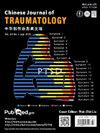Comparison of epidemiologic features between upper and lower limb injuries and risk factors for intensive care unit admission in a university hospital affiliated with the National Trauma Registry of Iran
IF 1.8
4区 医学
Q2 ORTHOPEDICS
引用次数: 0
Abstract
Purpose
Upper extremity injuries (UEIs) and lower extremity injuries (LEIs) constitute a considerable component of traumas. However, their epidemiologic differences and short-term in-hospital outcomes are not fully elucidated. This study aims to compare such discrepancies in a large-scale study.
Methods
In this retrospective study, all patients with UEIs and/or LEIs hospitalized from 24th July 2016 to 16th May 2020 in Sina Hospital, Tehran, Iran, and registered at the National Trauma Registry of Iran were enrolled in the study. Relevant demographic and clinical characteristics were extracted from the National Trauma Registry of Iran database. Patients were grouped into either UEI or LEI. For those with concomitant UEIs and LEIs, the more severe one based on the abbreviated injury scale was defined as the principal diagnosis. In addition, cases with the abbreviated injury scale > 3 for both UEI and LEI or concomitant injuries to body areas other than the limbs were excluded. Independent samples t-test, Mann-Whitney U test, Chi-square test, quintile regression models, and logistic regression models with “margins” command were used for statistical analyses, as indicated.
Results
In this research, 3170 eligible cases were identified. For the LEI group, there was a much higher proportion of male patients (86.7% vs. 82.0%) and higher mean age (years, 42.9 vs. 35.3) compared to the UEI group (both p < 0.001). Patients with an injury severity score (ISS) of 9 – 15 were outnumbered in the LEI group (22.9% vs. 1.6%, p < 0.001), while the proportion of those with an ISS < 9 was higher in the UEI group (98.1% vs. 76.8%, p < 0.001). The multiple logistic regression model showed a statistically significant association between intensive care unit (ICU) admission and ISS (odds ratio (OR) = 4.01 for ISS 9 – 15 vs. ISS < 9, 95% confidence interval (CI)): 3.01 – 5.35; OR = 17.65 for ISS ≥ 16 vs. ISS < 9, 95% CI: 4.03 – 77.27), age (OR = 1.02, 95% CI: 1.01 – 1.03), cause of injury (OR = 0.27 for blunt trauma vs. road traffic crash, 95% CI: 0.08 – 0.90; OR = 0.49 for cut/stab injuries vs. road traffic crash, 95% CI: 0.28 – 0.84) and body region (OR = 1.65 for lower extremity, 95% CI: 1.19 – 2.29). Having adjusted for other covariates, the odds of ICU admission in patients with LEIs was 1.65 times the odds in patients with UEIs.
Conclusions
Patients with LEIs were older and suffered from more severe injuries. In addition, the age- and ISS-adjusted ICU admission and length of hospital stay were significantly higher in LEI patients. The chance of ICU admission was associated with age, cause of injury, ISS, and body region. The findings of this study can aid in the meticulous selection of ICU-candidate patients. In addition, the role of factors other than ISS and age in ICU admission and prolongation of hospitalization should be addressed by prospective studies.
伊朗国家创伤登记处附属大学医院上肢和下肢损伤的流行病学特征与重症监护室入院风险因素的比较。
目的:上肢损伤(UEI)和下肢损伤(LEI)是创伤的重要组成部分。然而,他们的流行病学差异和短期住院结果尚未完全阐明。这项研究的目的是在一项大规模研究中比较这种差异。方法:在这项回顾性研究中,所有于2016年7月24日至2020年5月16日在伊朗德黑兰Sina医院住院并在伊朗国家创伤登记处登记的UEI和/或LEI患者均被纳入研究。相关的人口统计学和临床特征从伊朗国家创伤登记处数据库中提取。患者被分为UEI或LEI。对于那些伴有UEI和LEI的患者,基于缩写损伤量表的更严重的UEI被定义为主要诊断。此外,UEI和LEI的缩写损伤量表>3或肢体以外的身体区域合并损伤的病例也被排除在外。如图所示,使用独立样本t检验、Mann-Whitney U检验、卡方检验、五分位数回归模型和具有“裕度”命令的逻辑回归模型进行统计分析。结果:本研究共发现3170例符合条件的病例。对于LEI组,与UEI组相比,男性患者的比例要高得多(86.7%对82.0%),平均年龄也更高(42.9岁对35.3岁)(两个p结论:LEI患者年龄较大,损伤更严重。此外,LEI患者经年龄和ISS调整后的ICU入院率和住院时间明显较高。ICU入院的机会与年龄、损伤原因、ISS和身体区域有关。本研究的结果有助于仔细选择ICU候选患者此外,ISS和年龄以外的因素在ICU入院和住院时间延长中的作用应通过前瞻性研究来解决。
本文章由计算机程序翻译,如有差异,请以英文原文为准。
求助全文
约1分钟内获得全文
求助全文
来源期刊

Chinese Journal of Traumatology
ORTHOPEDICS-
CiteScore
3.80
自引率
4.80%
发文量
1707
审稿时长
28 weeks
期刊介绍:
Chinese Journal of Traumatology (CJT, ISSN 1008-1275) was launched in 1998 and is a peer-reviewed English journal authorized by Chinese Association of Trauma, Chinese Medical Association. It is multidisciplinary and designed to provide the most current and relevant information for both the clinical and basic research in the field of traumatic medicine. CJT primarily publishes expert forums, original papers, case reports and so on. Topics cover trauma system and management, surgical procedures, acute care, rehabilitation, post-traumatic complications, translational medicine, traffic medicine and other related areas. The journal especially emphasizes clinical application, technique, surgical video, guideline, recommendations for more effective surgical approaches.
 求助内容:
求助内容: 应助结果提醒方式:
应助结果提醒方式:


